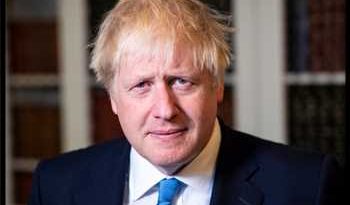Covid 19 coronavirus: Government targets rich investors as part of its ‘reset’ of immigration settings
Wealthy investors and “highly-skilled workers” will be the targets of New Zealand’s Covid-19 immigration “reset” to reduce the economy’s reliance on low-wage migrants.
In a speech setting out the Government’s intentions for immigration policy, Economic Development Minister Stuart Nash said that would include making it harder for employers to take on workers from overseas, other than in areas of genuine skills shortages.
“When our borders fully open again, we can’t afford to simply turn on the tap to the previous immigration settings,” said Nash, who was filling in for Immigration Minister Kris Faafoi.
“That path is a continuation of pressures on our infrastructure, like transport, accommodation, and downward pressure on wages.
“Since the borders closed, we’ve seen a reversal in the horticulture sector – for example – where there’s been a lift in wages to bring in local workers.”
Covid-19 had seen immigration grind to a halt. In normal times, more than seven million people entered New Zealand each year. In the 12 months from March last year to March this year just 165,000 people came in.
The country had a net migration gain of 6600 people compared with 91,900 people in the previous year.
This pause gave a “once-in-a-generation” chance for a reset, Nash said.
“It is a journey that can bring real benefits in productivity growth, high-value innovation, and well-paid jobs; not just for New Zealanders but for all those coming here to call New Zealand home.
“A reset is not merely about numbers, it’s also about ensuring we have the right incentives to support the growth path we want in our post-Covid recovery.”
The moves are in line with Labour’s 2017 immigration policy, which was to cut net migration (then at around 70,000 a year) by 20,000 to 30,000 by cutting back on international students coming for “low quality” courses, and low skilled workers.
High levels of migration have contributed to 30 per cent of New Zealand’s total population growth since the early 1990s.
“This has been fuelled, in particular, by increasing numbers of temporary migrant workers and students,” Nash said.
Temporary work visa holders made up almost five per cent of New Zealand’s labour force – the highest share compared to other OECD countries.
Increasingly these temporary workers were at lower skill levels – nearly half of all Essential Skills visa approvals in 2019 were at the two lowest skill levels, Nash said.
“This means businesses have been able to rely on lower-skilled labour and suppress wages rather than investing capital in productivity-enhancing plant and machinery, or employing and upskilling New Zealanders into work.”
In the decade prior to Covid-19, the number of people on temporary work visas in New Zealand doubled – from fewer than 100,000 to more than 200,000.
There was also a huge increase in demand for residency in New Zealand, with the vast majority of applicants already being onshore.
For example, around 80 per cent of applications for the Skilled Migrant category come from onshore applicants.
Another key initiative was the new Investment Attraction Strategy to encourage high-value international investment into New Zealand, Nash said.
“We want targeted, high-quality investment that establishes frontier firms, brings skills and technology to New Zealand, Nash said.
The Government had also created border exceptions for the Innovative Partnerships Programme and New Zealand Trade and Enterprise’s Investor Programme to enable representatives from global companies to come to New Zealand to conduct on-the-ground negotiations with companies that they wish to invest in.
These would allow more than 200 wealthy international investors to come to New Zealand over the next 12 months, Nash said.
There would also be changes to processing to make a better experience for the people who deal with New Zealand’s immigration services.
“As we focus on reopening New Zealand’s borders, we are determined not to return to the pre-Covid status quo,” Nash said.
“Sectors which rely on migrant labour, like tourism and the primary industries, will look different in future.”
Some sectors had been creative in addressing labour shortages, adjusting wages and working conditions, with changes to job offerings and career paths better suited to local labour, he said.
Prime Minister Jacinda Ardern said the immigration reset was not about “crude numbers” but the outcomes New Zealand – and those coming here – were after, Ardern said.
It would not affect Recognised Seasonal Employer workers from Pacific island countries, Ardern said.
The announcement follows another this month to bring in more skilled overseas workers with MIQ spaces opening up from the transtasman travel bubble.
This included 300 RSE workers a month, along with spaces for students, specialised construction workers and other sectors on a needs basis.
The announcement also follows increasing pressure on the Government to reunite migrant families split up after the borders closed to non-residents last year.
Nash said the Government acknowledged the difficulties those families faced, and they were working on solutions as circumstances allowed.
Source: Read Full Article

